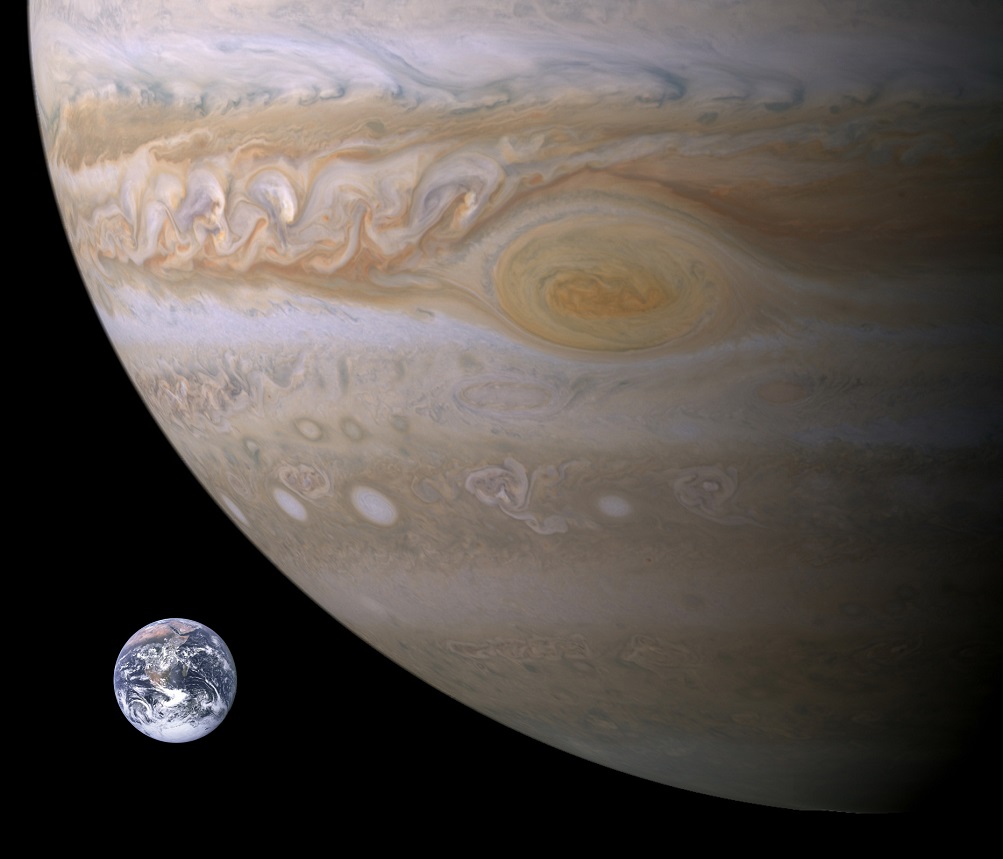Have you ever thought about Jupiter’s size and why it hasn’t become a star?
If not, I suggest you open a comparison image with all the planets in the Solar System right now. If not, I’ll give a simple example – the gas giant is 318 times more massive than our planet and nearly 2.5 times more than all objects in the Solar System together besides the Sun. Moreover, there are even stars that are smaller than Jupiter but it has not become one itself.
Following this fact, the question as to why Jupiter has not become the second star of the Solar System has been discussed thoroughly for decades. How about we explain it? Why hasn’t Jupiter become a star? How do stars form? What would happen if Jupiter does one day become a star?
What exactly is a star and how does one form?
A star is a huge gas ball with a large mass, which shrinks under the influence of gravitational forces. The result is a temperature increase in its center which causes a nuclear fusion – the formation of helium from hydrogen, accompanied by the release of huge amounts of energy.
To create conditions for fusion, the star must be massive. For example, the Sun has a mass of 333,000 times the mass of the Earth. There are stars whose mass is up to 100 times that of the Sun, as well as stars whose mass is about 8% of that of the Sun, and this is the minimum mass at which thermonuclear reactions are possible in the star’s core.
As for their formation, stars form huge clouds of gas and dust. If the gas cloud is massive enough, it begins to shrink under the influence of gravitational forces. This contraction causes an increase in pressure and the temperature within.
The object that forms in this area is called a protostar and is the initial stage of the star’s life. A protostar can be observed in the infrared region of the electromagnetic spectrum because it does not emit light from the visible spectrum. When the pressure and temperature rise enough, nuclear reactions begin that convert hydrogen to helium.
Jupiter – Sun Comparison; Why Can’t Jupiter Become a Star?
You may be surprised but Jupiter is actually quite similar to the Sun in certain ways. While the Sun has a mass 1050 times larger than Jupiter, their similarity is in their hydrogen-helium composition. You see, the mass of the Sun is divided between these two elements (not counting the rest) like this: 71% hydrogen and 27% helium. When you look at Jupiter, the percentages are almost identical – 73% to 24%.
If their composition is so similar, why isn’t Jupiter also a star? Back in time, there were theories that the gas giant was a failed star, that it could one day potentially become one, and so on. Modern science has proven quite the opposite and this is an absolutely groundless fear.

Simply said, nuclear fusion requires high heating, great bulk, intense compression, and fuel. The planet has a lot of hуdrogen, but it lacks high densitу and necessarу heating. To become a star, Jupiter would need at least 75–80 times its current mass to reach the critical threshold for hydrogen fusion. If it had been able to accumulate that mass during its formation, our Solar System could have become a binary star system, drastically altering the development of planets, including Earth.
However, even though Jupiter is not a star, it still emits more heat than it receives from the Sun due to gravitational contraction, where the planet’s immense gravity slowly compresses its interior, releasing energy in the process.
What would happen if Jupiter becomes a star?
The answer to this question may actually surprise you – almost nothing will change for us. It could change the amount of energy coming our way from space by right about 0.02% and it could potentially be brighter than the Sun. Scientists believe that we would be able to see it during the day but it would not affect our way of life.
It is even believed that it would not cause an effect on our orbit as we are too close to the Sun. It will, however, reflect on the outer planets in the Solar System such as Neptune and Uranus, and probably Saturn.
And there you have it. Jupiter may be big in size but its mass is nowhere near the amount it needs to even have a chance of becoming a star. Moreover, even if it does, it will likely not impact life on Earth although we can never be sure, right?
There is a lot more to learn about Jupiter in the future and I believe we only a small fraction of the secrets of this gas giant. And since we are discussing Jupiter, click here to see some of the most extraordinary images of the planet.
Could Jupiter Host Life?
Jupiter itself is an incredibly hostile environment for life as we know it. With winds reaching over 600 km/h, a crushing atmosphere of hydrogen and helium, and no solid surface, it is one of the least habitable places in the Solar System.
However, some of Jupiter’s moons could harbour life. Europa, one of its largest moons, has a subsurface ocean beneath its icy crust, and scientists believe it could contain the necessary conditions for microbial life. NASA’s recent Europa Clipper mission aims to explore this possibility.
Sources:
• Gunn, D. (n.d.). Could Jupiter become a star?
• Jupiter – In Depth. (2020, October 12).
• Starr, M. (n.d.). Jupiter Is Bigger Than Some Stars, So Why Didn’t We Get a Second Sun?











